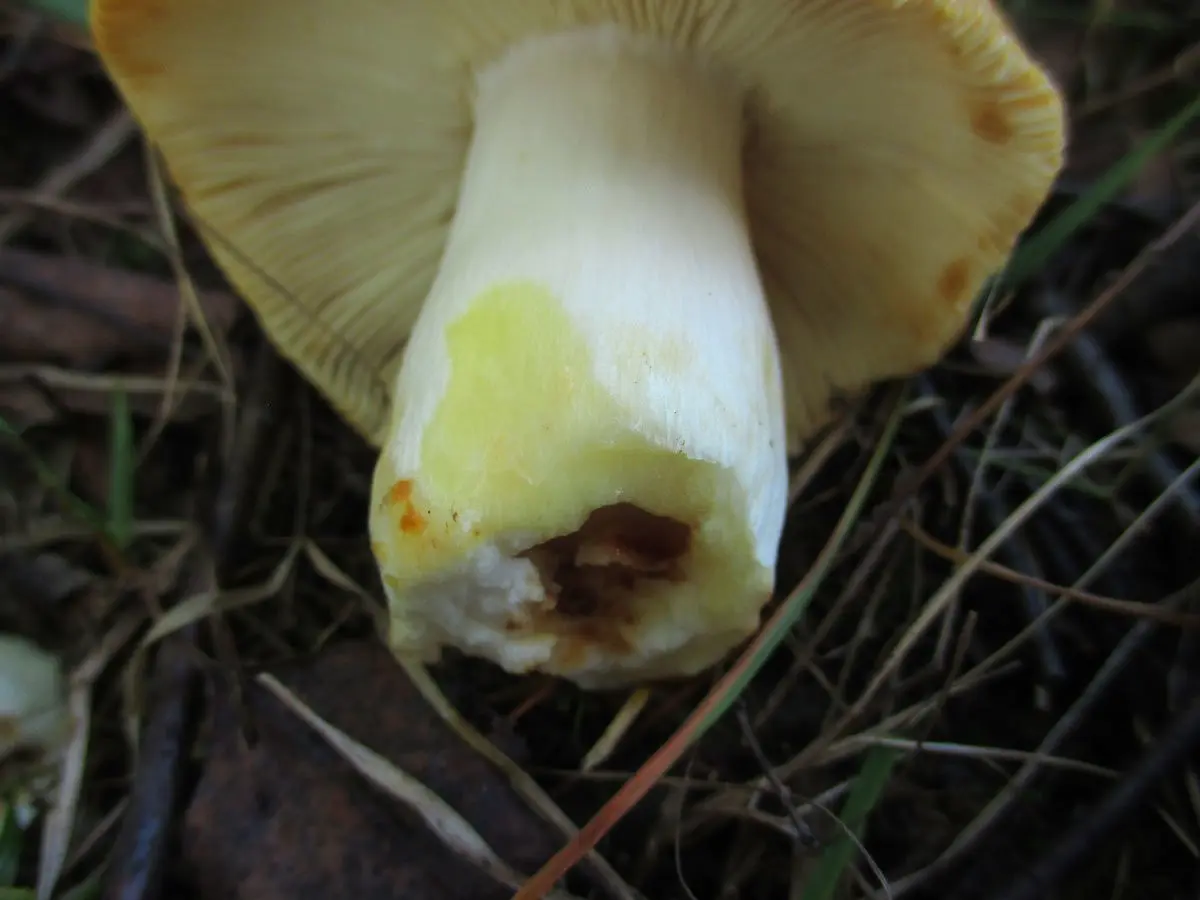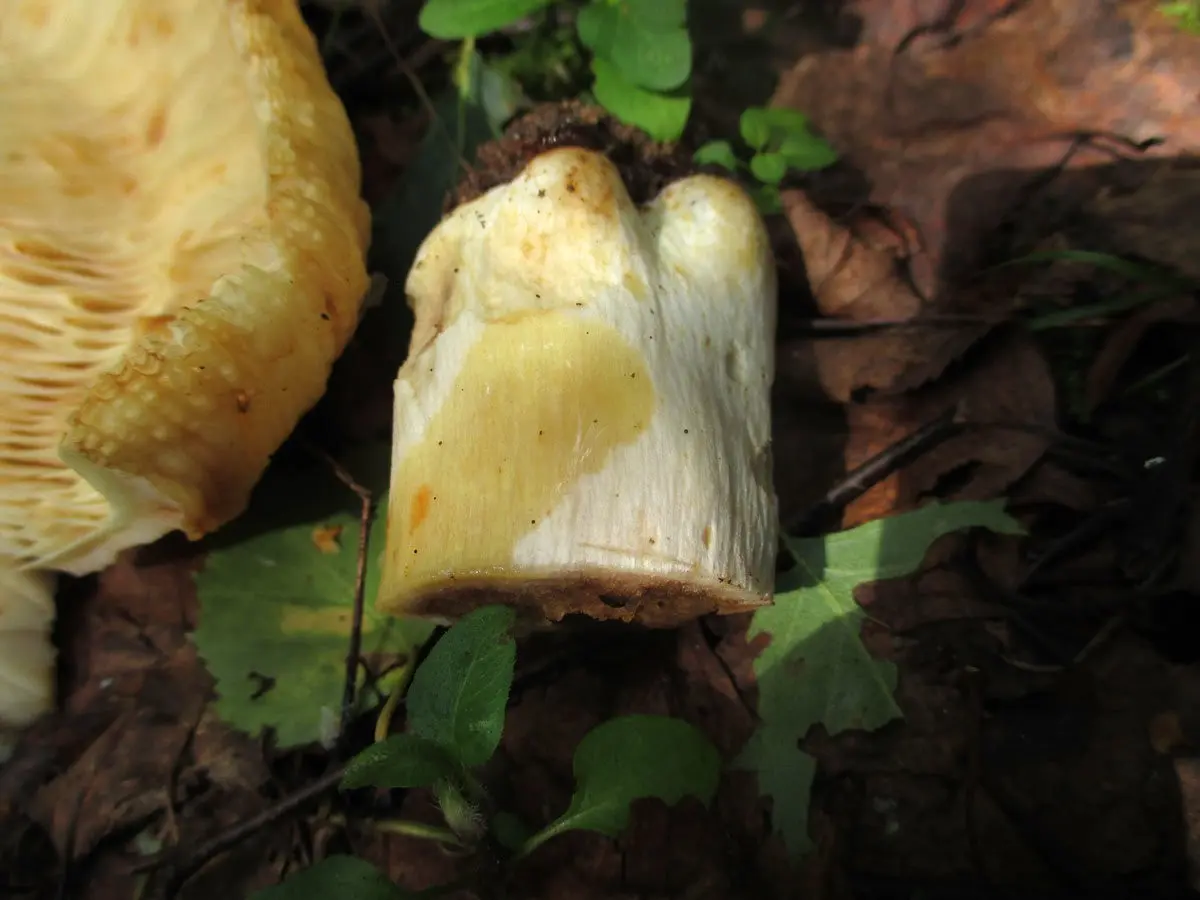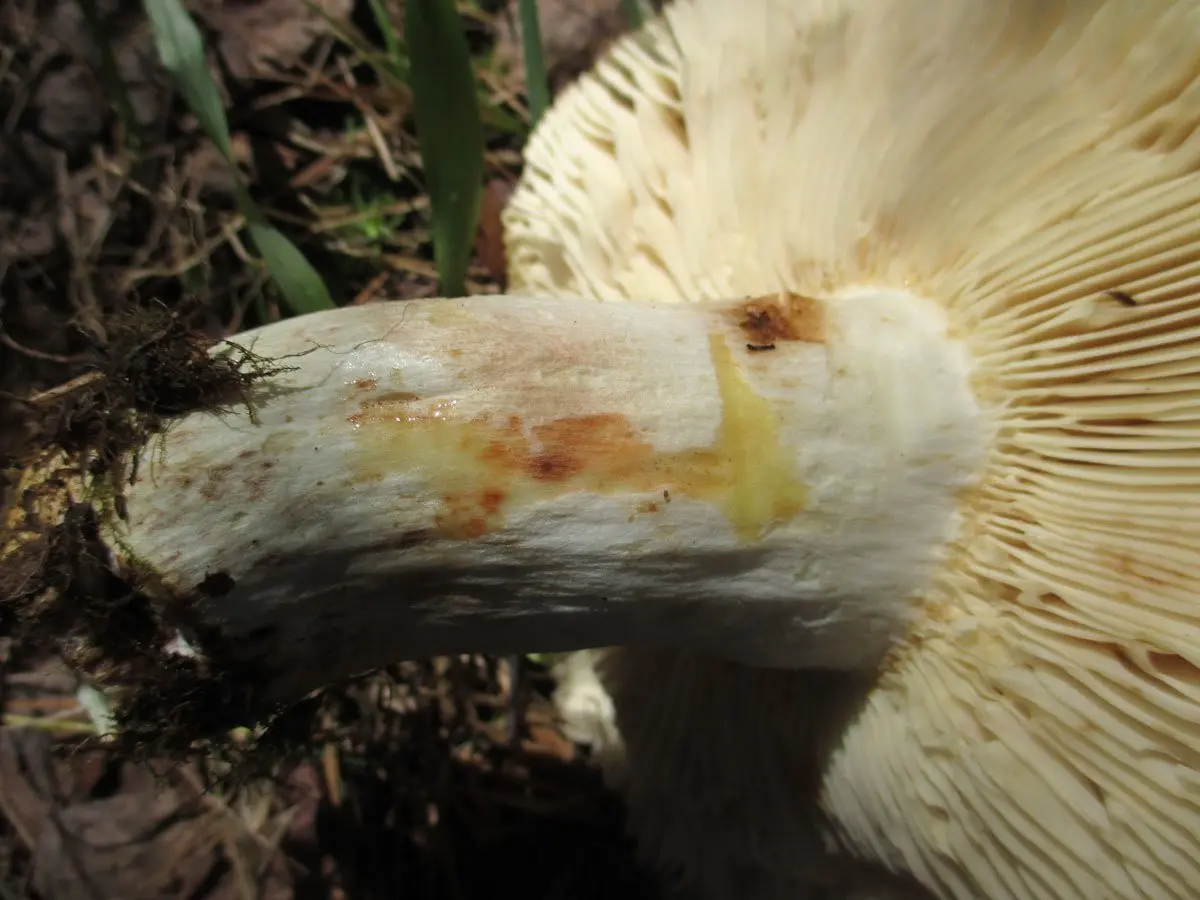Basement (Russula subfoetens)
- Division: Basidiomycota (Basidiomycetes)
- Subdivision: Agaricomycotina (Agaricomycetes)
- Class: Agaricomycetes (Agaricomycetes)
- Subclass: Incertae sedis (of uncertain position)
- Order: Russulales (Russulovye)
- Family: Russulaceae (Russula)
- Genus: Russula (Russula)
- Type: Russula subfoetens (Podvaluy)
:
- Russula stench var. smelly
- Russula foetens var. minor
- Russula subfoetens var. John

Hat: 4-12 (up to 16) cm in diameter, spherical in youth, then prostrate with a lowered edge, with a wide, but slight, depression in the center. The edge of the cap is ribbed, but ribbedness appears with age, with the opening of the cap. The color is pale-yellow, yellow-brown, honey shades, in the center to red-brown, without gray shades anywhere. The surface of the cap is smooth, in wet weather, mucous, sticky.
Pulp: White. The smell is unpleasant, associated with rancid oil. The taste ranges from subtle to quite spicy. A basement with a mild taste is considered a subspecies – Russula subfoetens var. grata (not to be confused with russula grata)
Records from average frequency to frequent, adherent, possibly notched-attached, possibly with a slight descent to the stem. The color of the plates is white, then creamy, or creamy with yellowness, there may be brown spots. Shortened blades are rare.
spore cream powder. Spores ellipsoid, warty, 7-9.5 x 6-7.5μm, warts up to 0.8μm.
Leg height 5-8 (up to 10) cm, diameter (1) 1.5-2.5 cm, cylindrical, white, aged with brown spots, with cavities, inside which are brownish or brown. The stem turns yellow when KOH is applied.


There may be brown pigment on the stem, hidden under a whitish layer, which appears red when KOH is applied to such a place.

Found from late June to October. Fruits usually massively, especially at the beginning of fruiting. Prefers deciduous and mixed forests with birch, aspen, oak, beech. Found in spruce forests with moss or grass. In spruce forests, it is usually more slender and slightly colored than in forests with deciduous trees.
There are many value-like russulas in nature, I will describe the main part of them.
- Valui (Russula foetens). Mushroom, in appearance, almost indistinguishable. Technically, valui is meatier, stinkier, and tastier. The only clear difference between the basement and the value is the yellowing of the stem when potassium hydroxide (KOH) is applied. But, it’s not scary to confuse them; after cooking, they are also indistinguishable, completely.
- Russula mealy-legged (Russula farinipes). It has a fruity (sweet) smell.
- Russula ocher (Russula ochroleuca). It is distinguished by the absence of a pronounced smell, a less pronounced ribbed edge, thinner flesh, the absence of brown spots on the plates and legs of aged mushrooms, and, in general, it looks more “russula”, not very similar to a valuy, and, accordingly, a basement.
- Russula comb (Russula pectinata). It has a fishy smell and a mild taste (but not unlike Russula subfoetens var. grata), usually has a grayish hue in the cap, which may be invisible.
- Russula almond (Russula grata, R. laurocerasi); Russula fragrantissima. These two species are distinguished by a pronounced almond smell.
- Russula Morse (C. unwashed, Russula illota) It is distinguished by an almond smell, dirty grayish or dirty purple hues on the cap, dark edging of the edge of the plates.
- Russula comb-shaped (Russula pectinatoides); Russula overlooked;
Russula sister (Russula sisters); Russula kept; A charming Russula; A remarkable Russula; Russula pseudopectinatoides; Russula cerolens. These species are distinguished by gray tones of the color of the cap. There are other, different, differences, but the color is enough for them.
- Russula pallescens. Grows in pine forests, not intersecting with the basement in the biotope, lighter shades, extremely spicy, small in size, thin-fleshed.
Conditionally edible mushroom. Very good in pickling, or sour, if harvested until the edges of the cap have moved away from the stem, after three days of soaking with a daily change of water.









